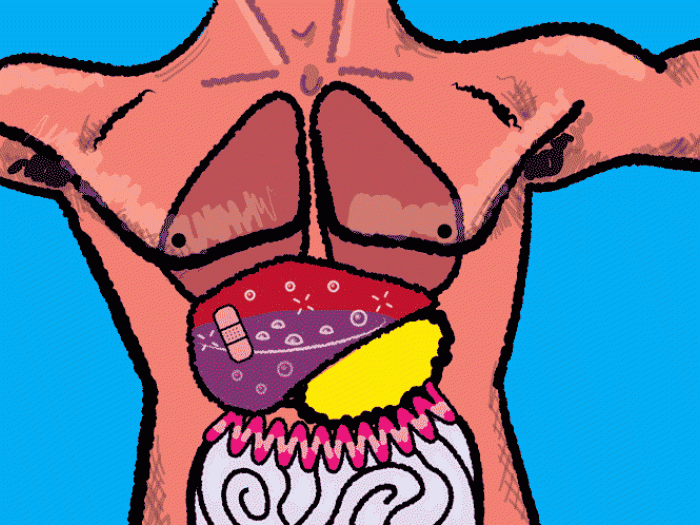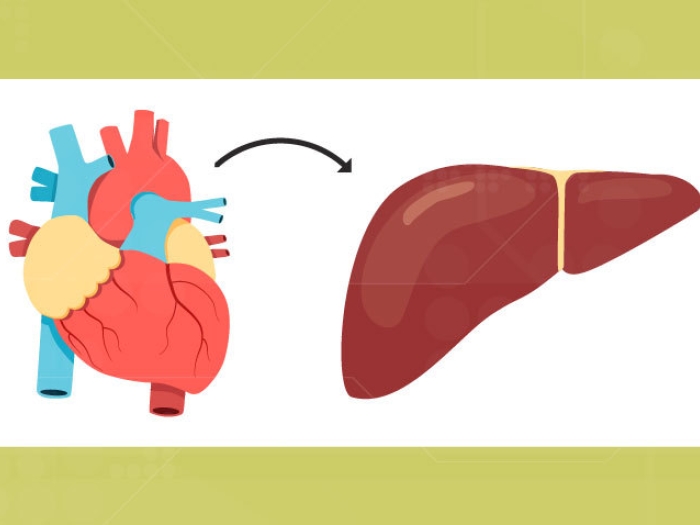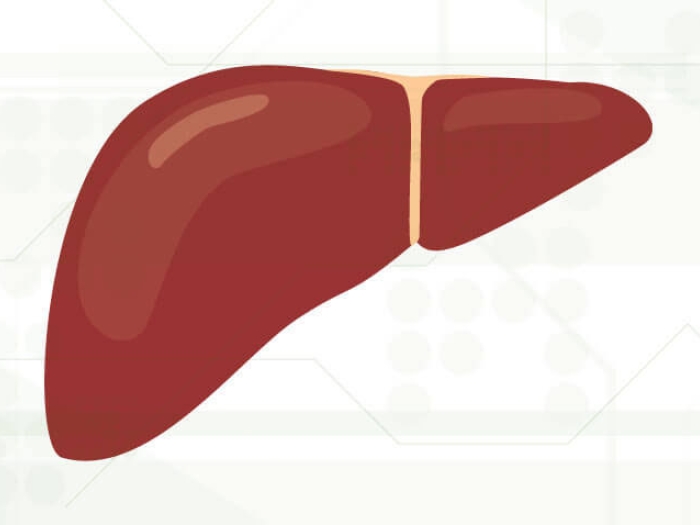Questions remain about causes and treatments of the most common form of liver disease. A U-M research team is finding answers in genetics.
7:00 AM
Author |

Nonalcoholic fatty liver disease (NAFLD) is thought to be the most common form of liver disease in the United States and worldwide. It's also expected to be the primary cause for liver transplantation by the end of the decade.
SEE ALSO: Troubling Trends in Drug-Induced Liver Damage
Despite such prevalence, there are many unknowns surrounding the disease. The condition is often silent; initial symptoms, including abdominal pain and fatigue, are indistinct, if present at all.
As a result, many individuals with NAFLD do not even know they have it until the condition escalates to something much more serious, such as cirrhosis or liver failure.
Obesity, diabetes and high cholesterol are considered common risk factors, but the correlations between these risk factors and NAFLD are not even close to perfect.
"Our studies suggest that approximately 25 to 30 percent of how much fat is in your liver is due to genetics, and the rest is probably environmental," says Elizabeth K. Speliotes, M.D., Ph.D., M.P.H., assistant professor of internal medicine, computational medicine and bioinformatics at the University of Michigan.
"Some of my patients are the epitome of health. They tell me they work out every day. But it doesn't matter: They still have a lot of fat in their liver."
Because there are no effective medical treatments for the disease, patients are often left without viable options, even if diagnosed early and accurately.
Which is why Speliotes is on a mission to uncover genetic clues about the widespread disease and identify effective treatments.
Some of my patients are the epitome of health … But it doesn't matter: They still have a lot of fat in their liver.Elizabeth K. Speliotes, M.D., Ph.D., M.P.H.
A search for connections
In working with the Genetics of Obesity-Related Liver Disease Consortium, an international group of researchers working together and sharing data to discover the causes of NAFLD, Speliotes and her team identified five genetic loci associated with the disease.
SEE ALSO: Specialty Care Improves Liver Disease Survival
Starting with 7,000 people, the investigators calculated liver fat based on CT scans and carried out genome-wide association analyses to identify specific genetic changes associated with fatty liver. They then confirmed five of these in people with histology-proven disease.
Interestingly, they found that genes related to development of fat in the liver are different from those associated with overall adiposity, as determined using body mass index.
Even though obesity is correlated with developing metabolic complications, including fatty liver disease, the correlation is less than 30 percent. That means many obese people will be told they are at risk of NAFLD but will never develop it, and many people will develop NAFLD and not be obese.
Using genetics, physicians can more specifically tailor treatment to the individual rather than use treatments based on population statistics that may not quite fit that individual's needs (i.e., getting the right treatment to the right person at the right time for the right thing that ails them).
"Indeed, some of these variants increase the risk of developing cirrhosis (scarring in the liver) sixfold and hepatocellular carcinoma (liver cancer) twelvefold, whereas others do not," Speliotes says. This emphasizes that these genetic variants do indeed affect medical outcomes.
"Genetically, it looks like the main drivers of obesity are more genes that play a role in the nervous system, whereas the drivers that cause fatty liver disease affect the handling of lipids and glucose in the liver," Speliotes says. "That changes how we think about these diseases and opens up new ways to specifically target them for therapeutic intervention."
Environmental factors and fatty liver disease
Speliotes' team is also exploring the relationship between NAFLD-related genes and environmental factors to identify the triggers that precipitate disease in some people who carry specific disease-predisposing variants. That way, physicians can tell patients to avoid potentially triggering exposures.
"There are a crazy number of 'health' recommendations now out there on the internet and elsewhere. If we can figure out which ones are relevant to a person's health and focus on changing these, we will increase the effectiveness of our treatments and decrease human and medical costs," she says.
By examining the effects of NAFLD-associated variants across other metabolic diseases including high cholesterol, diabetes and heart disease, researchers can see different patterns of effects. This suggests there may be subtypes of metabolic disease researchers can now identify with these markers to better diagnose and treat these in the future.
Finally, by examining the effects of these variants across ancestries, researchers can say whether genetics are behind much of the higher prevalence of NAFLD in Hispanic people than those of European or African ancestry.

Explore a variety of healthcare news & stories by visiting the Health Lab home page for more articles.

Department of Communication at Michigan Medicine
Want top health & research news weekly? Sign up for Health Lab’s newsletters today!





